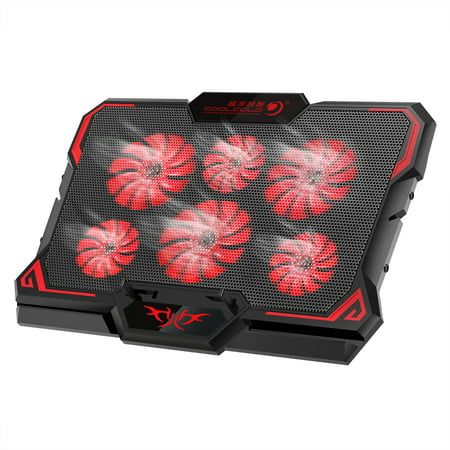In today’s fast-paced digital world, laptops have become our indispensable companions for work, entertainment, and everything in between. However, with increased demands on our laptops, overheating has become a common issue. Enter the laptop cooling pad – a simple yet effective accessory designed to combat heat buildup and elevate your laptop’s performance. In this comprehensive guide, we will explore the benefits of using a laptop cooling pad, how they work, types available, and essential factors to consider when choosing the right one for your laptop.
1. The Problem of Laptop Overheating
- Introduce the problem of laptop overheating and its adverse effects on performance, battery life, and overall longevity.
- Explain how excessive heat can lead to thermal throttling, causing slowdowns and system instability.
- Highlight the importance of maintaining a laptop’s temperature within optimal limits for peak performance.
2. How Laptop Cooling Pads Work
- Provide a brief explanation of the cooling pad’s functionality in improving laptop ventilation.
- Describe how cooling pads use fans or passive cooling methods, such as heat-absorbing materials or mesh surfaces, to dissipate heat.
- Illustrate the cooling pad’s role in increasing airflow around the laptop’s underside, preventing heat buildup.
3. Benefits of Using a Laptop Cooling Pad
- Discuss the various advantages of using a cooling pad, including improved performance, longer battery life, and reduced risk of hardware damage.
- Emphasize the potential impact on extending the laptop’s lifespan by mitigating heat-related wear and tear.
4. Types of Laptop Cooling Pads a) Active Cooling Pads:
- Describe active cooling pads equipped with built-in fans for effective heat dissipation.
- Mention the different fan configurations and speeds available in these cooling pads.
b) Passive Cooling Pads:
- Explain passive cooling pads that use heat-absorbing materials or elevated mesh surfaces to promote natural airflow.
- Highlight the silent operation and low power consumption of passive cooling pads.
c) Adjustable Cooling Pads:
- Discuss the benefits of adjustable cooling pads with multiple height settings, allowing users to find their preferred ergonomic angle.
- Explain how these pads can improve typing comfort and reduce strain on the wrists and neck.
5. Factors to Consider When Choosing a Laptop Cooling Pad a) Laptop Size Compatibility:
- Emphasize the importance of choosing a cooling pad that matches your laptop’s size for maximum effectiveness.
b) Cooling Performance:
- Advise readers to consider the number of fans and their speed for optimal cooling performance.
- Mention the CFM (Cubic Feet per Minute) rating as an indicator of airflow capacity.
c) Portability and Design:
- Discuss the significance of a lightweight and slim design for easy portability and usage on-the-go.
d) Noise Level:
- Explain how the noise level of the cooling pad’s fans can impact user experience, especially during quiet environments.
6. Maintenance and Care
- Provide tips on how to maintain and clean the cooling pad to ensure its longevity and continued performance.
Conclusion: Summarize the importance of laptop cooling pads in tackling overheating issues and improving laptop performance. Encourage readers to invest in a quality cooling pad that aligns with their laptop’s size and cooling needs. Remind them that this small investment can significantly enhance their computing experience, prolong their laptop’s lifespan, and ensure productivity and efficiency in the long run.
